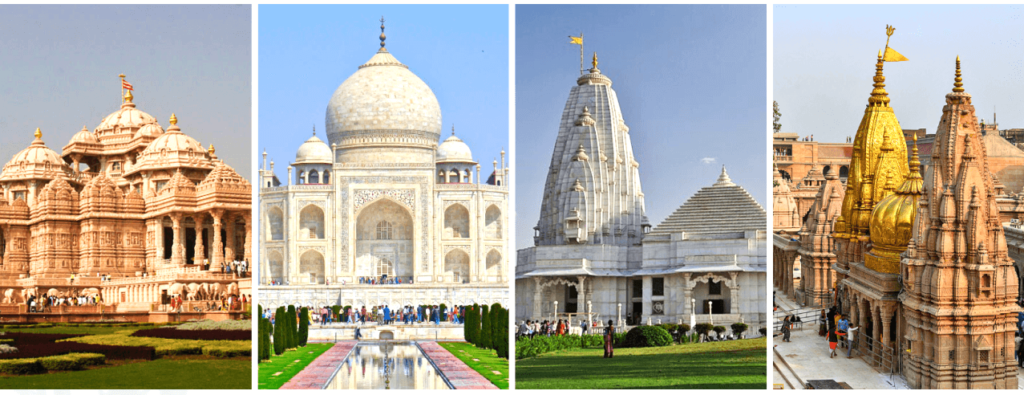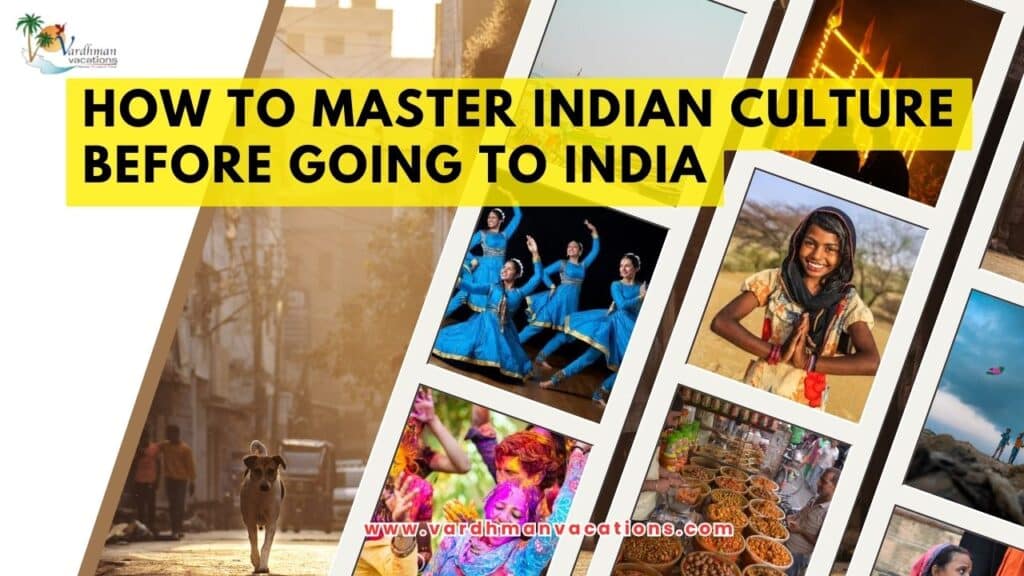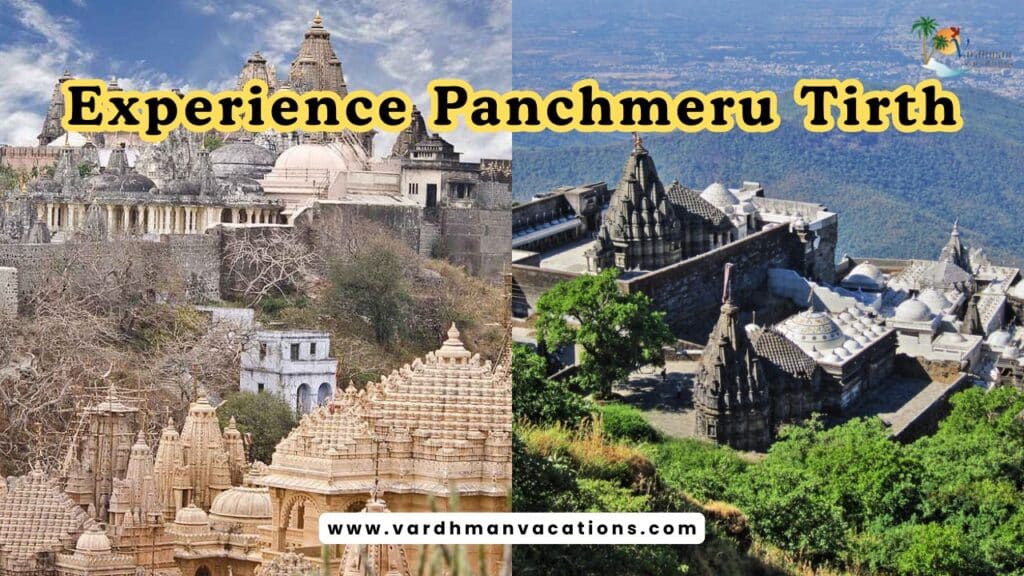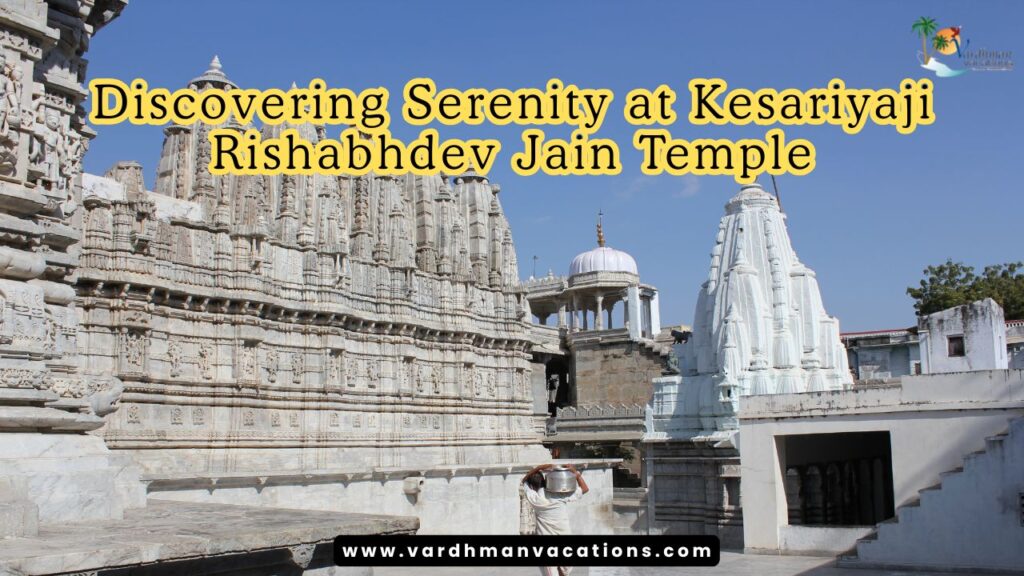India is a country known for its diverse cultures, rich history, and spiritual heritage, making it an attractive destination for travelers seeking enchanting temples and architectural wonders. The Golden Triangle Tour is a classic itinerary that takes you through Delhi, Agra, and Jaipur, revealing the heart of India. However, what if we add a touch of mysticism to this adventure? Join us on a soul-stirring exploration of the temples in these iconic cities, culminating in the spiritual haven of Varanasi.
Delhi: Where Divinity Meets Modernity
Delhi, the heart of India, pulsates with a rich spiritual heritage. Amidst its bustling streets and historical monuments, numerous temples stand as beacons of devotion and architectural splendor. Let’s embark on a sacred journey to discover some of the most revered temples in Delhi.
Akshardham Temple: A Marvel Beyond Worship
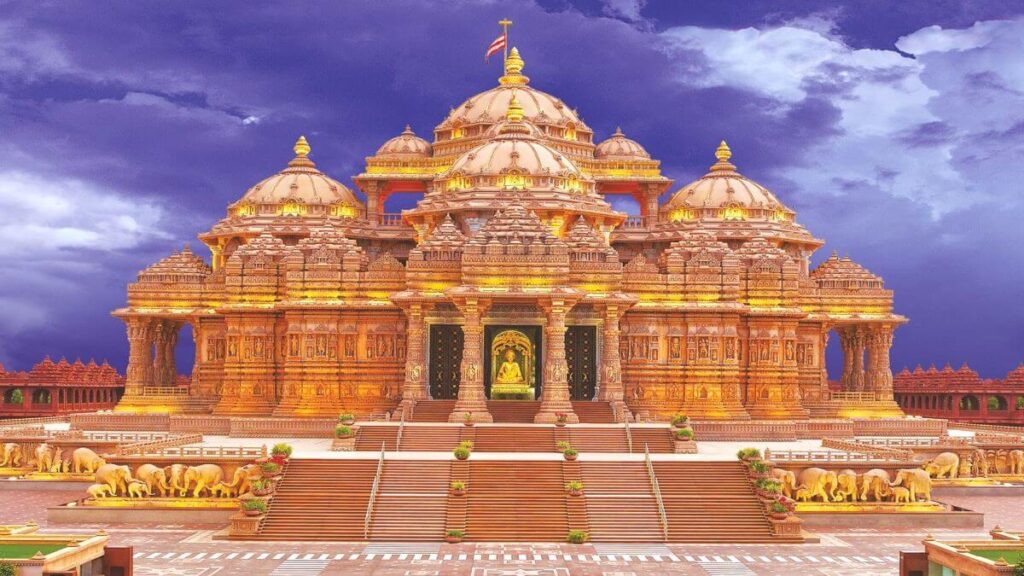
Akshardham Temple, more than a place of worship, is an architectural masterpiece that celebrates Indian culture, art, and devotion. Dedicated to Swami Narayan Akshardham, this colossal complex near the Commonwealth Games Village on NH 24 is a blend of spirituality and cultural heritage. Stroll through its gardens, explore Indian culture, and witness the captivating light and sound show in the evening.
Gurudwara Bangla Sahib: A Sikh Sanctuary
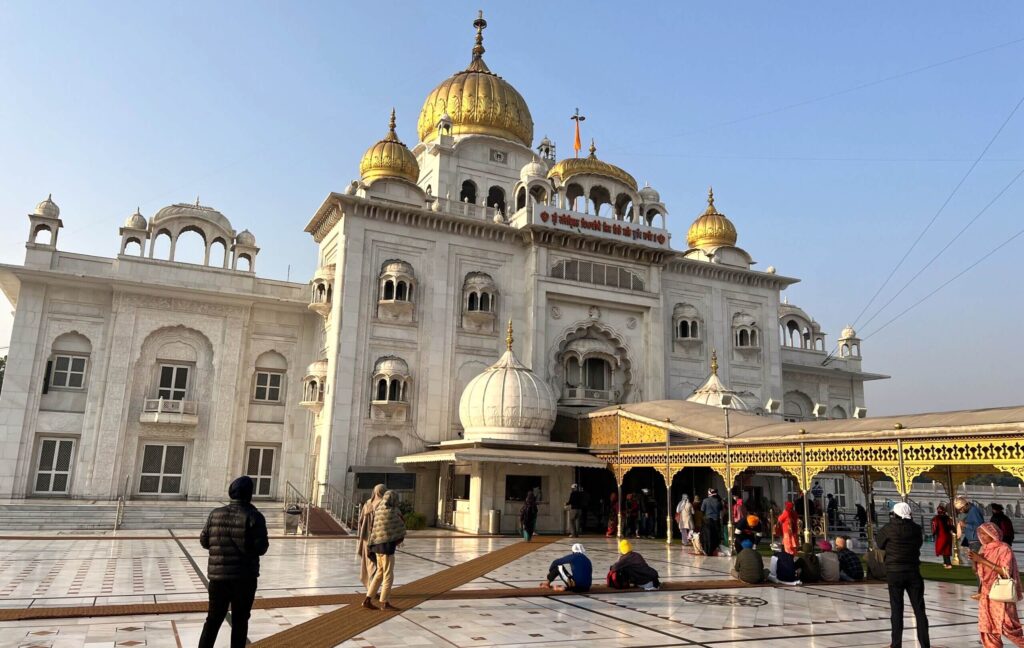
Gurudwara Bangla Sahib, nestled in the heart of Delhi, is a prominent Sikh temple. Its golden dome and serene Sarovar (holy pool) attract devotees seeking solace. The community kitchen (Langar) serves free meals to all, embodying the spirit of selfless service.
Lotus Temple: A Symbol of Unity
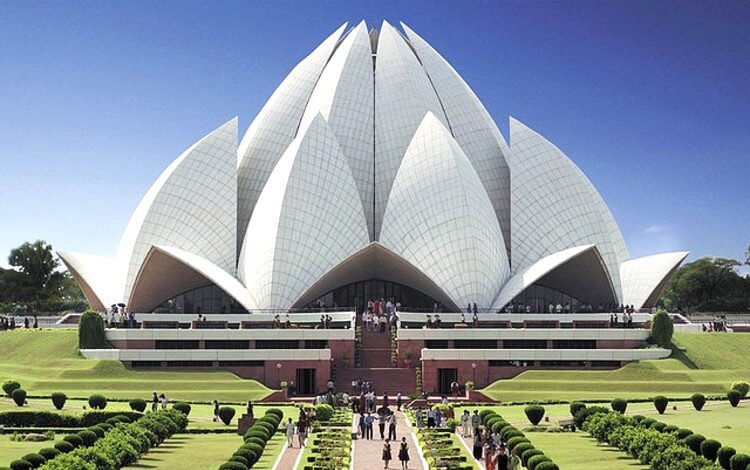
The Bahai Lotus Temple, shaped like a blooming lotus, graces Delhi’s landscape. Its serene ambiance encourages introspection and unity. This architectural wonder is on the UNESCO tentative list and welcomes people of all faiths.
Birla Mandir (Laxminarayan Temple)
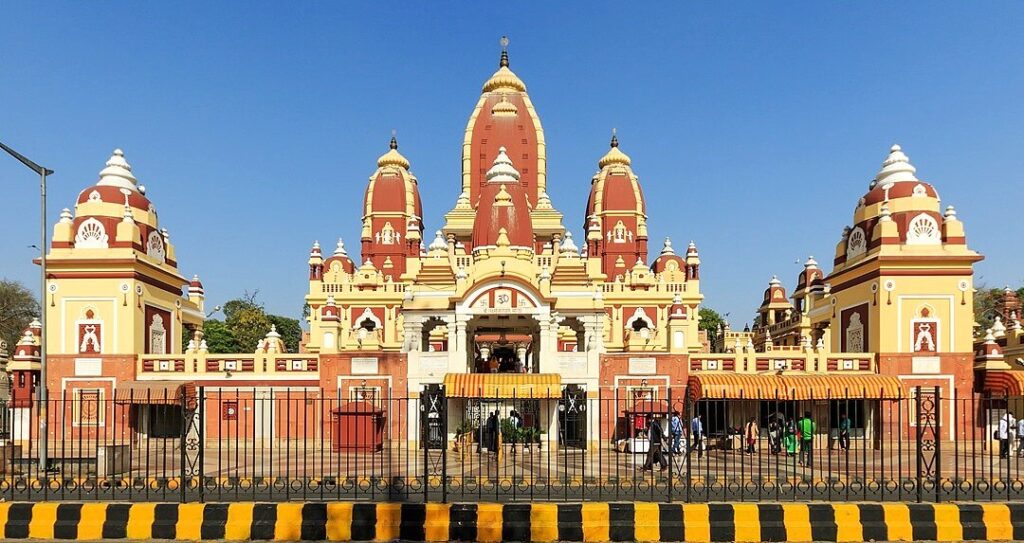
Birla Mandir, Situated in the heart of Delhi, this temple is dedicated to Lord Vishnu and Goddess Lakshmi. Its white marble structure and intricate carvings make it a visual delight. The evening aarti (ritual) here is a mesmerizing experience. The temple also hosts cultural events and festivals.
Kalkaji Mandir: Ancient and Vibrant
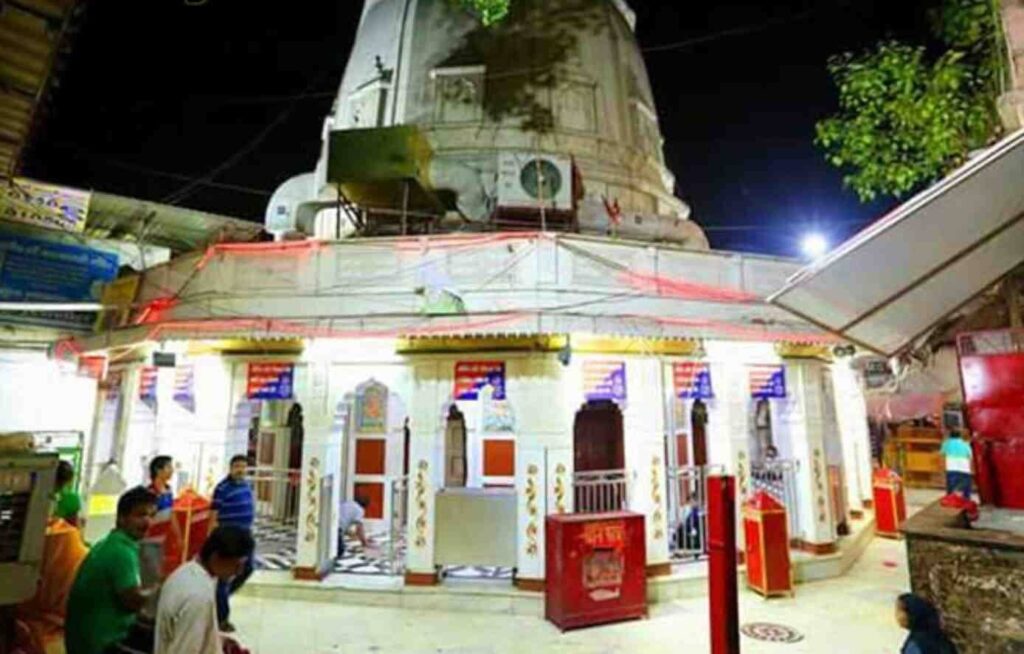
Kalkaji Mandir, partially built in 1764, is a significant Hindu temple. Devotees flock here to seek blessings from Goddess Kalka, an incarnation of Goddess Durga. The temple’s vibrant atmosphere during festivals is a sight to behold.
Read Also: Sound and Light Show at Red Fort Delhi
Jaipur: The Pink City’s Spiritual Gems
Jaipur, the vibrant “Pink City” of India, is not only famous for its majestic forts and palaces but also for its spiritual sanctuaries. Let’s delve into the sacred temples that grace this historical city and its surroundings.
Galtaji Temple (Monkey Temple)
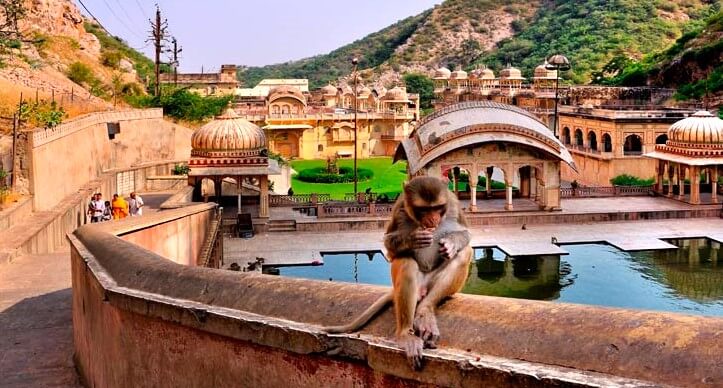
Galtaji Temple, located on the outskirts of Jaipur, also known as the Monkey Temple is a prehistoric Hindu pilgrimage site. Surrounded by the striking Aravalli hills, it boasts several shrines, holy kunds (water tanks), pavilions, natural springs and playful monkeys create a unique atmosphere. The temple’s serene ambiance and beautiful gorge attract tourists year-round. The main temple is dedicated to Lord Hanuman, creating a unique spiritual atmosphere. Don’t miss the chance to explore this ancient marvel.
Birla Temple Jaipur (Lakshmi Narayan Temple)
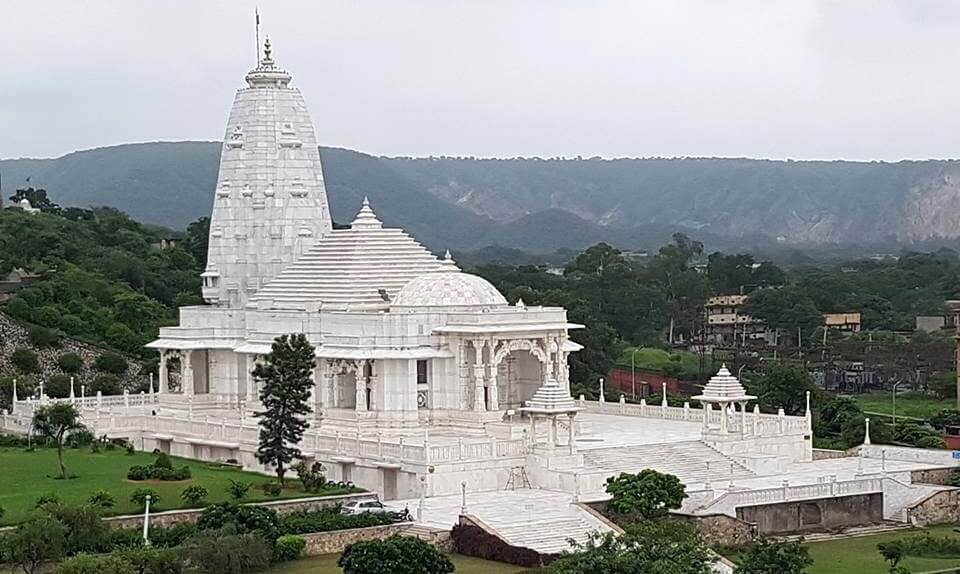
The magnificent Birla Temple in Jaipur is part of the Birla temples spread across India. Situated on the Moti Dungari Hill, it was built by the Birla family in 1988. Dedicated to Lord Vishnu and Goddess Lakshmi, this white-marble shrine is a blend of modernity and devotion. The evening aarti here is a mesmerizing experience. This temple glows beautifully at night. The marble carvings depict Hindu scriptures.
Govind Dev Ji Temple
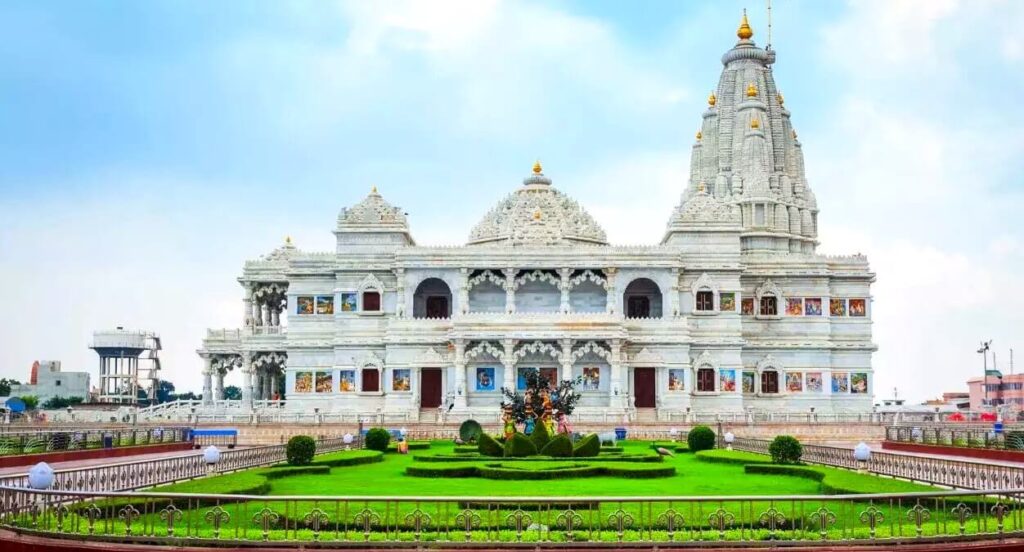
Located within the City Palace complex, the Govind Dev Ji Temple is a significant temple for Krishna followers. Locals believe that the deity’s statue resembles Lord Krishna’s form during his incarnation on Earth. The temple comes alive with Mangala Aarati at dawn and Shayana Aarati at night.
Shila Devi Mandir
The Shila Devi Mandir is a temple located in Amer, Jaipur with a fascinating legend associated with its submerged statue. The temple attracts devotees seeking blessings and historical insights. According to the legend, when Raja Man Singh I of Amber faced defeat, he dreamt of Goddess Shila Devi, who instructed him to retrieve her submerged statue from the sea near Jessore. The king followed her guidance and the recovered idol became the revered Shila Devi. The temple has a captivating history and is a must-visit for those interested in religious and historical places.
Karni Mata Temple (Rat Temple) in Bikaner
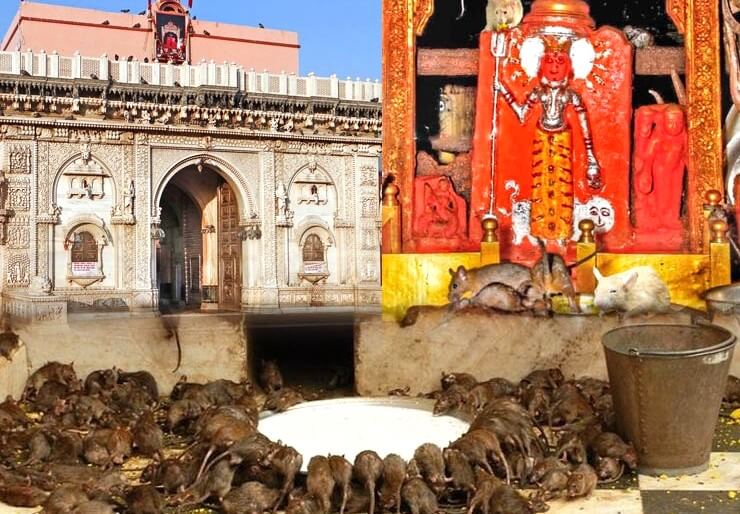
Although not in Jaipur itself, the Karni Mata Temple in Bikaner is worth mentioning. The temple is dedicated to Goddess Mata Karni, considered an incarnation of Goddess Durga. But what truly sets it apart is its reverence for rats. These furry creatures roam freely within the temple premises and are worshipped alongside other deities.
Read Also: Elephant Ride at Amer Fort in Jaipur
Read Also: Discover Jaipur in 24 Hours: Short Visit
Agra: Beyond the Taj Mahal
Agra, a city with a rich historical heritage, is not just known for the Taj Mahal but also for several temples that hold spiritual significance. Here are some of the notable temples in Agra and nearby areas that are worth visiting.
Shri Mankameshwar Mandir, Agra
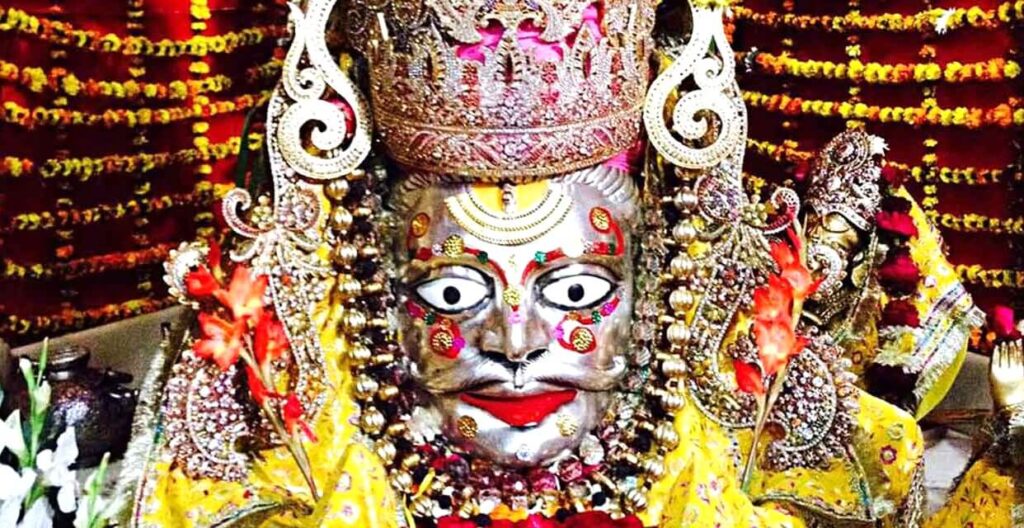
Shri Mankameshwar Mandir is one of the oldest temples in Agra, located in the heart of the city. It predates even the iconic Taj Mahal and is believed to have been built by the Pandavas during their 13-year exile. This ancient Hindu temple is dedicated to Lord Shiva and is famous for fulfilling the wishes and desires of its devotees.
The temple attracts a large number of visitors during festivals such as Maha Shivaratri, Navratri, Dussehra, and Diwali. The temple is open from 5:30 am to 8:30 pm, and its intricate carvings and serene atmosphere leave a lasting impression on visitors. It is one of the most popular and revered temples in Agra.
Shri Khatu Shyam Ji Temple
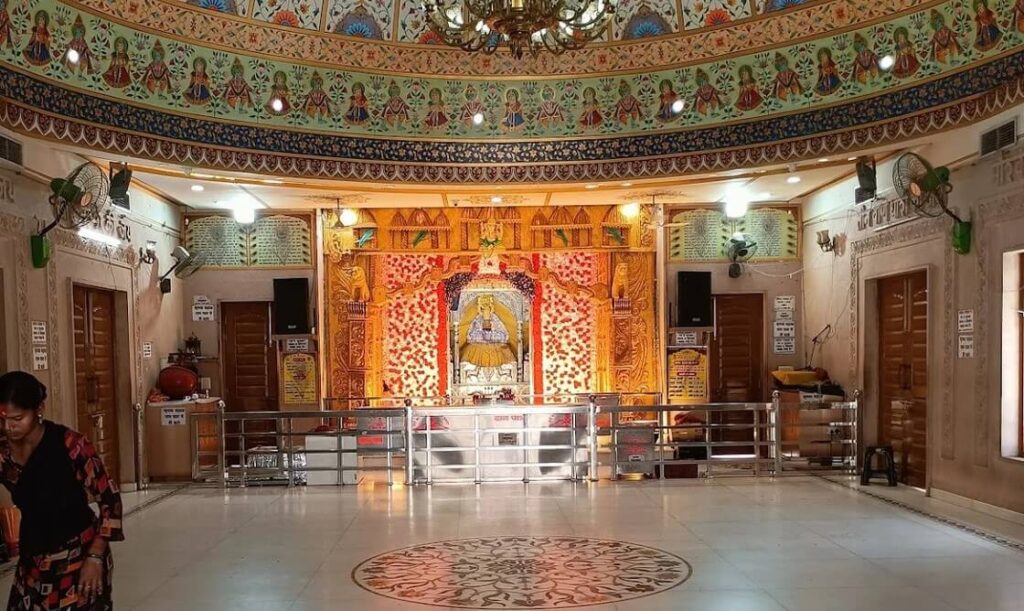
Opened on March 9, 2023, this temple is the largest Khatu Shyam Ji temple in Uttar Pradesh. It is located in the Jeoni Mandi area of Agra and stands as a three-story structure inspired by the famous Khatu Shyam Ji temple in Rajasthan. The main idol of Khatu Shyam is made of rare stone and is revered by devotees who visit the temple every day. Khatu Shyam Maharaj, the son of Ghatotkacha and grandson of Bhima & Hidimbi, is highly respected here, similar to Lord Krishna.
Balkeshwar Mahadev Temple
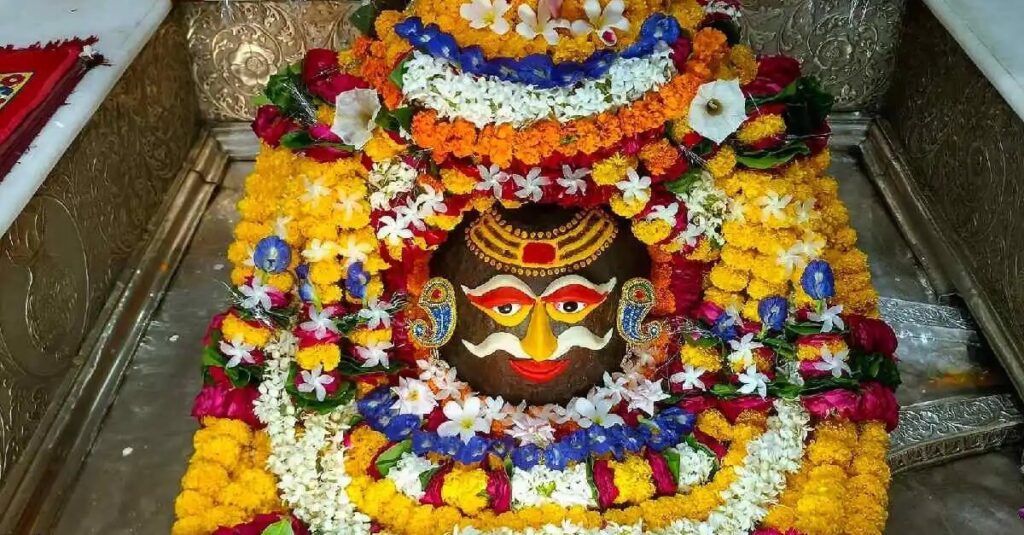
Over 700 years old, this temple is dedicated to Lord Shiva (Mahadev Shiv). According to legend, the discovery of a Shiv Ling in the area near the Yamuna River was made after a cow’s loud mooing. The temple was built in that area afterward. Locals frequently visit the temple, especially on Mondays. You can visit the temple anytime between 5 am to 9 pm.
This temple is believed to be one of the oldest temples in Agra, and it is dedicated to Lord Shiva. The temple complex features a sacred pond and several shrines, attracting devotees from all over India.
Dayalbagh Temple
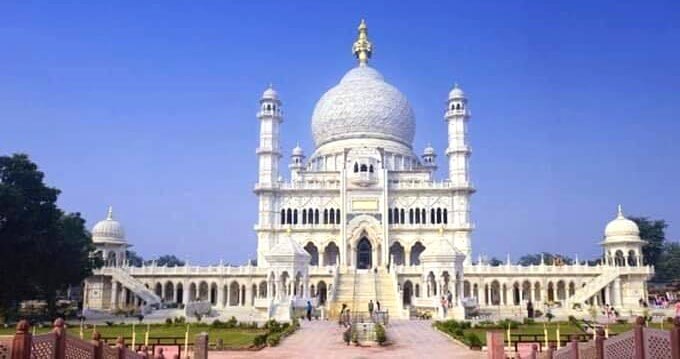
The Dayalbagh Temple is a place of worship associated with the Radha Soami faith. It is known for its unique and beautiful architecture, which took over 76 years to complete after construction began in 1904. The temple contains the Samadhi of Soamiji Maharaj, the founder of the Radha Soami faith. Visitors can explore the guest house, canteen, souvenir shop, library, and museum.
The temple complex is not just a place of worship, but an entire township established by the Radha Soami Satsang Beas. It features sprawling gardens, educational institutions, and a magnificent white marble temple that showcases a blend of Hindu and Mughal architectural styles. It is a serene place for reflection and spiritual contemplation.
Langta Hanuman Temple
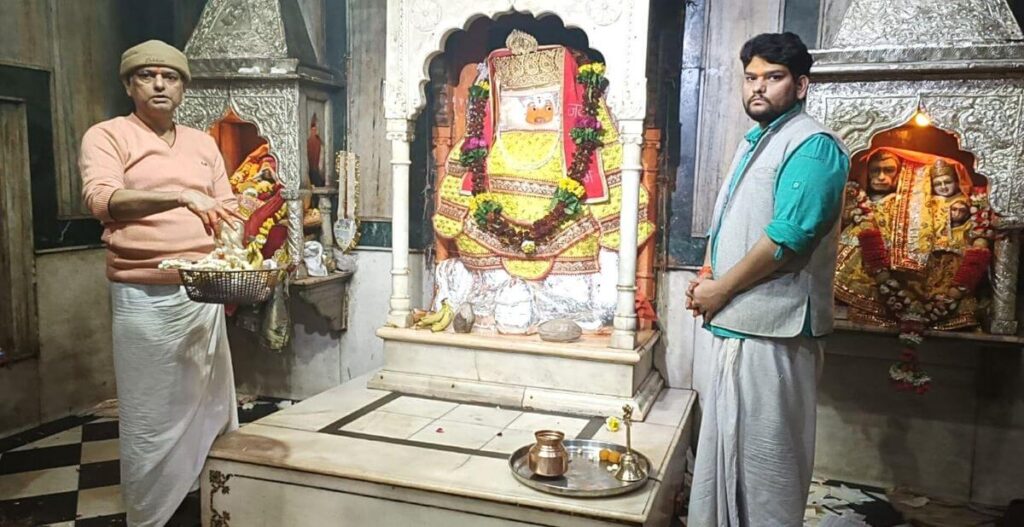
The Langta Hanuman Temple, also known as the “Langde Ki Chowki Hanuman Mandir,” is a Hindu temple located in Agra, India. The temple is dedicated to Lord Hanuman, the monkey god, and is famous for its unique idol with one leg bent. It is a popular pilgrimage site for devotees who seek blessings for strength and perseverance. The temple is situated on the Delhi-Agra Highway, near the banks of the Yamuna River.
Prithvinath Temple, Rawli Temple, Kailash Mandir, Prachin Rajeshwar Mahadev Temple, and Gurudwara Guru Ka Taal are other religious spots worth exploring in and around Agra. Exploring these temples in Agra allows you to delve deeper into the city’s rich history and vibrant culture, offering a glimpse into the faith and traditions of its people.
Read Also: Mohabbat The Taj Show: A Spectacular Display of Love and History
Varanasi: The Eternal City
Our last destination on this tour is Varanasi, which is known as the oldest continually inhabited city in the world. The Ganges River flows through the city, and it is a place where spirituality is highly valued. Here, life and death are intertwined, and you can observe daily rituals and vibrant ceremonies performed on the ghats along the sacred banks of the Ganges River. A visit to Varanasi can be a journey to the soul of India.
Kashi Vishwanath Temple
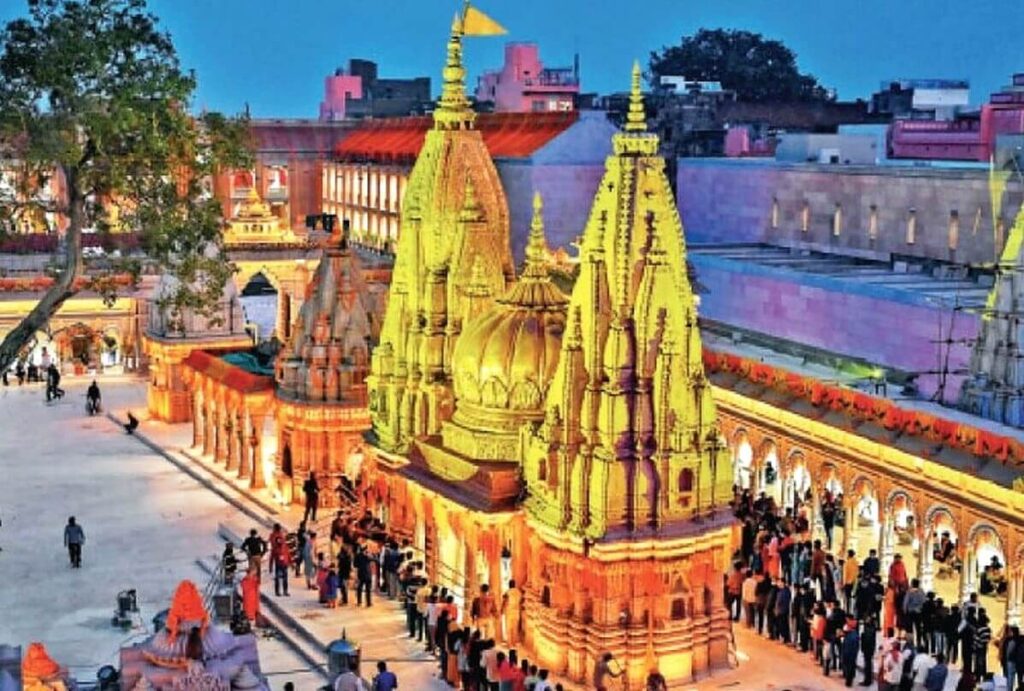
The Kashi Vishwanath Temple is situated near the Ganga Ghats and is the most renowned and significant temple in Varanasi. It is dedicated to Lord Shiva, who is believed to be the protector of the holy city. The original Vishwanath temple was destroyed several centuries ago, but the present structure was constructed in the 18th century.
This temple is dedicated to Lord Shiva and is one of the twelve Jyotirlingas, which are the holiest Shiva temples in India. The temple complex is a maze of narrow lanes and is a crucial pilgrimage site for Hindus.
Maa Annapurna Temple
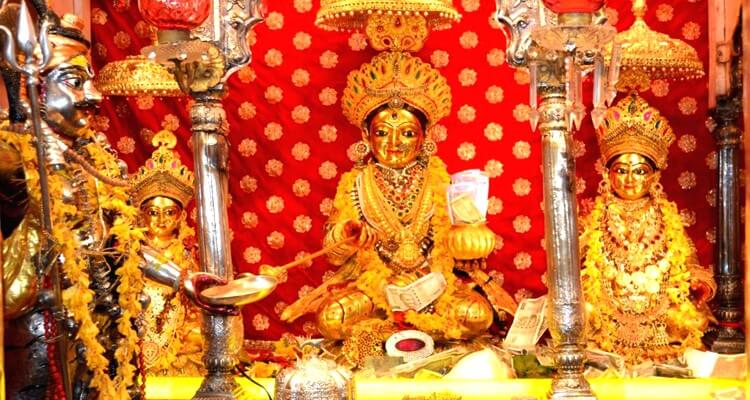
Maa Annapurna Temple is a Hindu temple located near Kashi Vishwanath Temple. The temple is dedicated to Goddess Annapurna, who is believed to provide food and nourishment. Visitors come to the temple seeking the goddess’s blessings, which are believed to bring prosperity and good health.
The temple’s architecture is impressive, with intricate carvings and sculptures adorning the walls and pillars. It is said that those who visit the temple will never go hungry, as the goddess’s blessings ensure that they always have enough to sustain themselves. The temple is a must-visit for those interested in experiencing India’s rich spiritual and cultural heritage.
Sankat Mochan Hanuman Temple
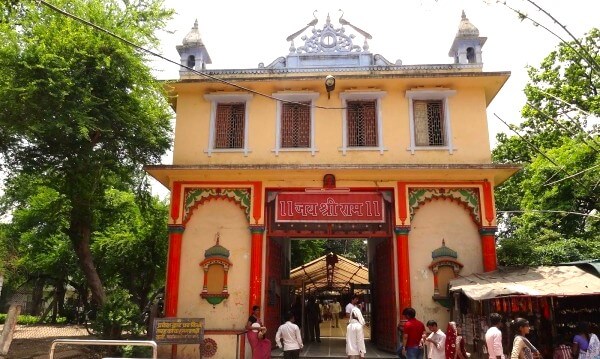
This temple is called the “wish-fulfilling” temple and is dedicated to Lord Hanuman, the monkey god. People believe that praying at this temple can help overcome life’s challenges and obstacles.
Bharat Mata Temple
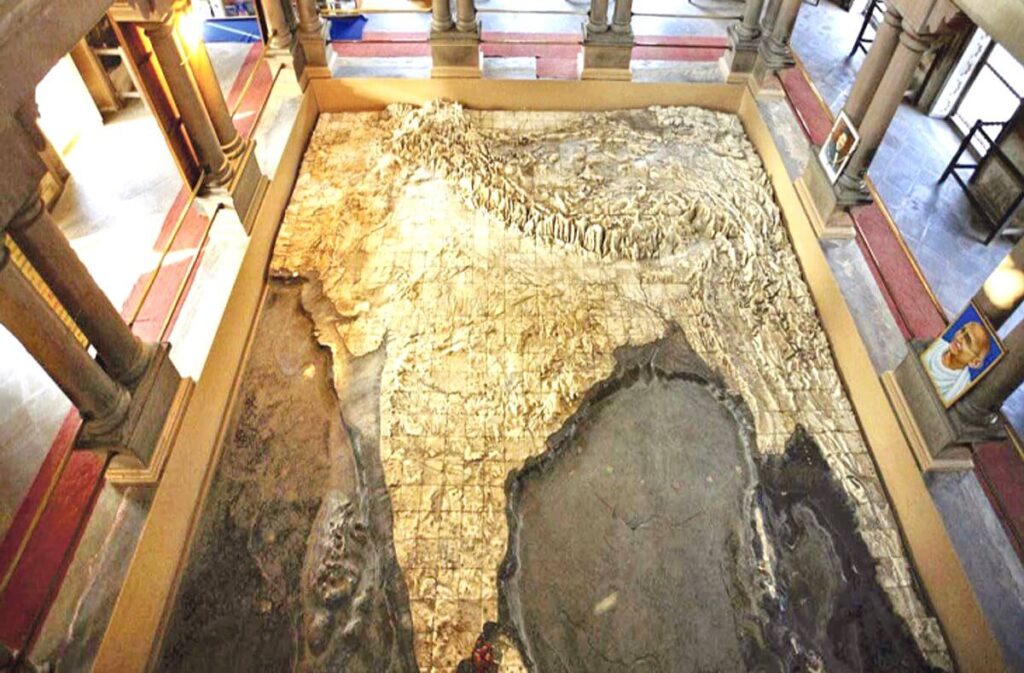
The Bharat Mata Temple is a unique place of worship dedicated to Mother India. Visitors can pay their respects to the nation and view a map of India made from various types of marble.
Sarnath Stupa
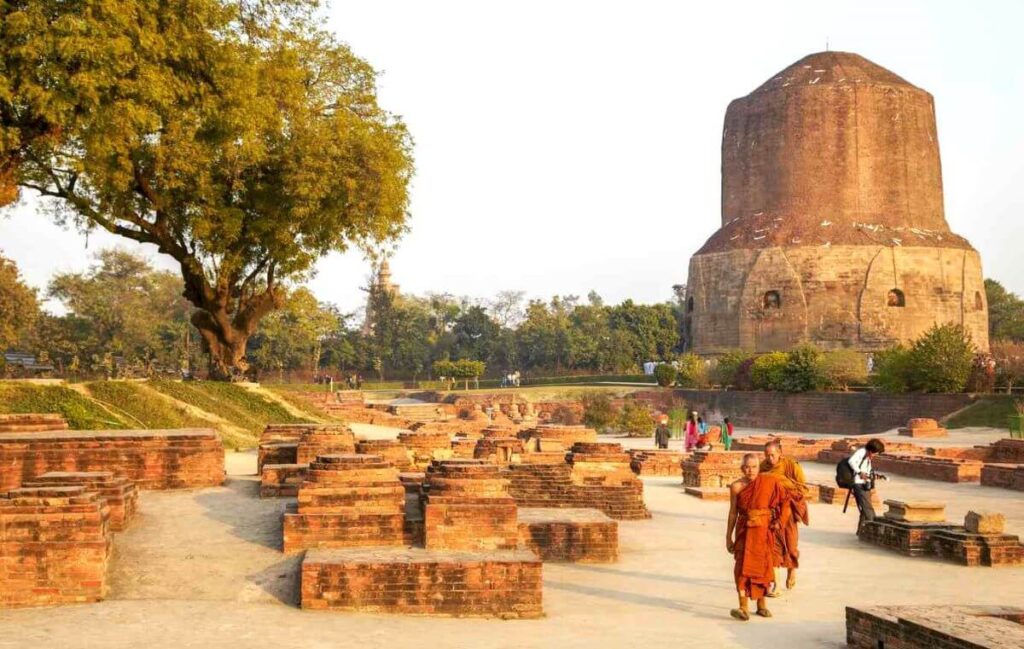
Just outside Varanasi lies Sarnath, where Lord Buddha delivered his first sermon. Visit the Dhamek Stupa and the Sarnath Museum to delve into Buddhist history.
These are just a few of the many temples in Varanasi. Each temple has its own unique story to tell, and exploring them is a great way to learn about the rich history and culture of Hinduism. It is important to remember to dress modestly and be respectful of local customs when visiting any temple in Varanasi.
How to Plan Your Golden Triangle Temple Tour?
If you’re planning a Golden Triangle temple tour, there are a few things you should keep in mind to make the most of your spiritual journey. It’s important to choose the right accommodations and be aware of local customs. Here are some tips to help you have a successful trip:
- Research and prioritize temples based on your personal interests and spiritual preferences.
- Consider the best time to visit each destination, taking into account the weather conditions and cultural festivals.
- Arrange transportation between cities, opting for convenient modes like trains or private tours.
- Respect local customs and religious sensitivities, dress modestly and observe temple etiquette.
- Embrace spontaneity and allow room for serendipitous discoveries along the way.
Remember, the goal is to make your trip as easy and enjoyable as possible. By following these tips, you can make the most out of your Golden Triangle temple tour and have a memorable spiritual journey.
Embark on this unforgettable journey through India’s Golden Triangle, where every temple, monument, and interaction tells a story waiting to be discovered.
FAQs About Golden Triangle Tour with Temples
The best time to visit is during the winter months (October to March) when the weather is pleasant for sightseeing.
Ideally, plan for a minimum of 5-7 days to explore the Golden Triangle thoroughly and savor each destination’s essence.
It’s advisable to dress modestly and cover your shoulders and knees when visiting temples out of respect for religious customs.
While solo travel is possible, it’s recommended to exercise caution and stay aware of your surroundings, especially in crowded areas.
Indian Rupee (INR) is the widely accepted currency throughout the Golden Triangle route. It’s advisable to carry a mix of cash and cards for convenience.

